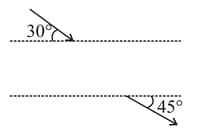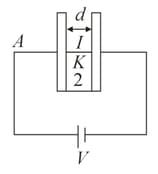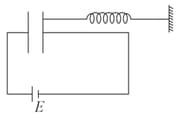Effect of Dielectrics on Capacitance
Effect of Dielectrics on Capacitance: Overview
This topic covers concepts such as Induced Charges on the Dielectric Slab Kept inside a Parallel Plate Capacitor, Induced Charges on the Conducting Slab Kept inside a Parallel Plate Capacitor, and Electric Field inside a Parallel Plate Capacitor.
Important Questions on Effect of Dielectrics on Capacitance
The two plates of a parallel plate capacitor are apart. A slab of dielectric constant and thickness is introduced between the plates with its faces parallel to them. The distance between the plates is so adjusted that the capacitance of the capacitor becomes of its original value. What is the new distance between the plates?
A parallel plate condenser is charged and isolated. When a sheet of glass is interposed between the plates
A dielectric material gets _____ when it placed in an electric field.
When a dielectric is placed in an external electric field a dielectric gets polarised.This statement is ture or false.
When dielectric is placed in an electric field the field within the dielectric is?
When a conducting slab is kept between two plates of parallel plate capacitor then capacitance.
A conducting slab has kept between two plates of parallel plate capacitor then electric field inside the slab is
A parallel plate capacitor of capacitance is connected to a battery of emf . If a dielectric material of dielectric constant is inserted between the plates, the magnitude of the induced charge will be:
An electron with a kinetic energy of enters the space between the plates of the plane capacitor made of two dense metal grids at an angle of with the plates of capacitor and leaves this space at an angle of with the plates. What is the potential difference of the capacitor?

A dielectric slab fills the lower half region of parallel plate capacitor as shown in figure. Take plate area as then incorrect statement is :-

The capacitance of a parallel plate air capacitor is . If a dielectric of dielectric constant , and thickness equal to one fourth the separation is placed between the plates, then capacity becomes . Then, the ratio is,
The charges on two parallel copper plates separated by a small distance are and . A test charge q experiences a force when placed between these plates. Now if one of the plates is removed to infinity, then the force on the test charge will become-
A parallel plate capacitor with plate area and plate separation is charged at the rate of . The dielectric between the plates has a dielectric constant . If the displacement current through the capacitor is A then the value of is nearly
A parallel plate capacitor has a capacity when air is present between its plates. The space between the plates is filled with a dielectric slab of dielectric constant . The capacitor is now connected to a battery of by wires. The dielectric slab is then removed. Then the charge passing through the wire is
In a parallel plate with air capacitor of capacitance if the lower half of the air space is filled with a material of dielectric constant its capacitance changes to:
The radii of two spherical conductors and are in the ratio Conductor is in air while is surrounded by a meditm of relative permittivity . The ratio of the capacitances of and is
One plate of a capacitor is connected to a spring as shown in figure. Area of both the plates is . In steady state separation between the plates is (spring was unstretched and the distance between the plates was when the capacitor was uncharged). The force constant of the spring is approximately:

Dielectric strength of air is What maximum potential upto which a capacitor of capacity and plate separation is is charged?
The plates of a parallel plate capacitor are charged up to volt. A thick plate is inserted between the plates, then to maintain
the same potential difference, the distance between the capacitor plates is increased by . The dielectric constant of the plate is :
The force between the plates of a parallel plate capacitor of capacitance and distance of separation of the plates with a potential difference between the plates, is-
